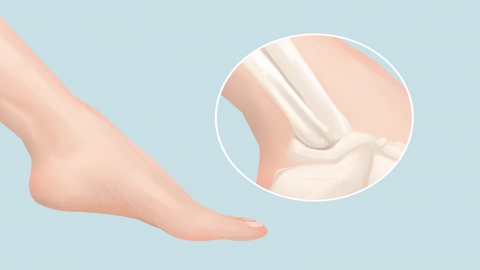What causes foot pain and swelling four months after an ankle fracture when walking?
Generally, the main causes of foot pain and swelling four months after an ankle fracture include insufficient rehabilitation exercise, impaired venous return, traumatic arthritis, poor fracture healing, and tendon adhesion. If discomfort occurs, it is recommended to seek timely medical evaluation and treatment at a正规 hospital. Detailed explanations are as follows:
1. Insufficient Rehabilitation Exercise
Long-term immobilization after fracture can lead to ankle muscle atrophy and joint stiffness. When walking is resumed, increased muscular load may cause local congestion, edema, and pain. Under medical guidance, increase range-of-motion exercises for the ankle joint. Soak feet in warm water daily to promote circulation, gradually extend walking duration, and avoid sudden or excessive physical activity.

2. Impaired Venous Return
Ankle fracture may damage local veins. During recovery, venous valve function may not be fully restored, leading to obstructed blood return when walking, resulting in foot swelling and pain, which typically improves with rest. Elevate the affected limb above heart level when resting, wear medical compression stockings to assist venous return, avoid prolonged standing or sitting, and perform toe-raising exercises regularly to promote blood flow.
3. Traumatic Arthritis
If the fracture involves the joint surface, articular cartilage may become worn. Increased joint friction during walking triggers inflammation, causing foot pain and swelling, often accompanied by joint clicking or crepitus. Under medical supervision, medications such as glucosamine hydrochloride capsules, celecoxib capsules, or diclofenac sodium sustained-release tablets may be prescribed. Intra-articular hyaluronic acid injections can help lubricate the joint. In severe cases, ankle arthrodesis may be required.
4. Poor Fracture Healing
Misalignment of fracture ends or delayed bone union may cause localized tissue irritation under weight-bearing, leading to pain, swelling, and limited ankle movement. Under medical guidance, patients may take calcium carbonate D3 tablets, osteopeptide tablets, or Jiegu Qili tablets. Avoid weight-bearing activities; in severe cases, open reduction and internal fixation surgery may be necessary.
5. Tendon Adhesion
After a fracture, tendons may adhere to surrounding tissues, restricting tendon gliding during walking. This causes traction on local tissues, resulting in pain, swelling, and difficulty in ankle flexion and extension. Medications such as ibuprofen sustained-release capsules, etoricoxib tablets, or Huoxue Zhitong capsules may be used under medical advice. Manual release techniques can be helpful; in severe cases, surgical lysis of tendon adhesions may be performed, followed by intensive postoperative rehabilitation training.
In daily life, follow medical advice to progressively engage in rehabilitation exercises; wear soft-soled shoes and avoid walking on excessively hard surfaces; keep the ankle warm and avoid cold exposure; undergo regular X-ray follow-ups to monitor fracture healing; if swelling worsens, rest promptly and avoid forced walking.




